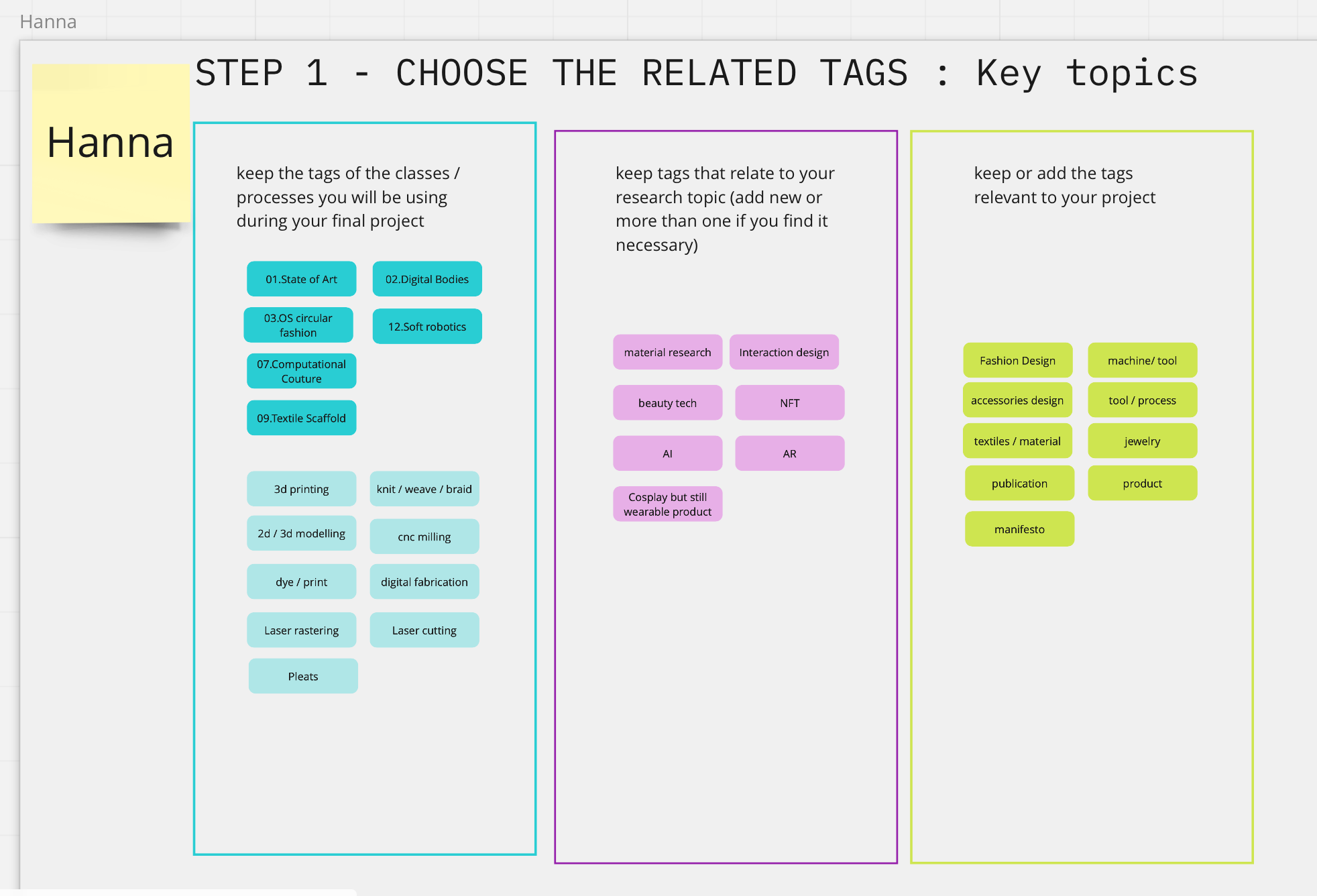11. Implications and applications¶
Research¶



FINAL MIND MAP LINK MIRO BOARD¶
https://miro.com/app/board/o9J_lk85R4g=/
WHY DIGITAL FASHION?¶
-
Digital fashion is inherently sustainable, with the production of a single digital garment requiring 97% less carbon and 872 fewer gallons of water than a psychical garment, according to DressX, a digital fashion startup. Plus, there’s no leftover inventory at the end of the season that must be discounted, donated or destroyed.
-
With a digital item, there is no need to buy raw materials, spend money on labor, bother with manufacturing or ship something around the world. Brands already have a vast archive of collections to pull from and repurpose for the digital realm. Plus, they don’t only profit from the first sale. They can collect royalties each time an item is resold. This is made possible by embedding terms in a “smart contract” on blockchain technology, which will power the metaverse.
-
It may give brands a new way to test products, too, launching them first in the digital world, gathering feedback and assessing demand before selling them in the physical world. Shoppers who like the digital version might be able to click a button to order the physical version.
-
it’s also an investment opportunity. If someone buys an NFT — a non-fungible token, which is a type of digital asset stored on the blockchain — and it grows in value, it can be resold for a profit. For instance, in 2019, The Fabricant sold a shimmery silver dress called “Iridescence” for 54 Ether, or about $9,500; Today it’s worth over $200,000.
-
This technology enables designers to experiment whilst reducing the time and expense required for creating multiple samples. Designers can create their collections with intricate detail enabling buyers to make purchasing decisions based on these assets, making the process more sustainable, time and travel efficient.
EXAMPLES¶
- Balenciaga FW21 X Dimension Studio. DIGITAL SHOW
- The Billion Dollar Collection by H&M A fully digital fashion collection made to showcase the untapped opportunity of early-stage sustainable tech-innovations with the potential to reivent the fashion industry. The price tag of each garment corresponds to the support that each start-up estimates is needed to create large-scale impact until 2030.

B2C BUSSNES MODEL¶
- B2C: Direct purchase from the customer thorugh the online store.